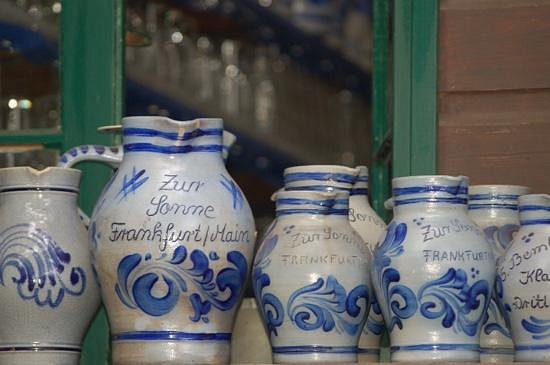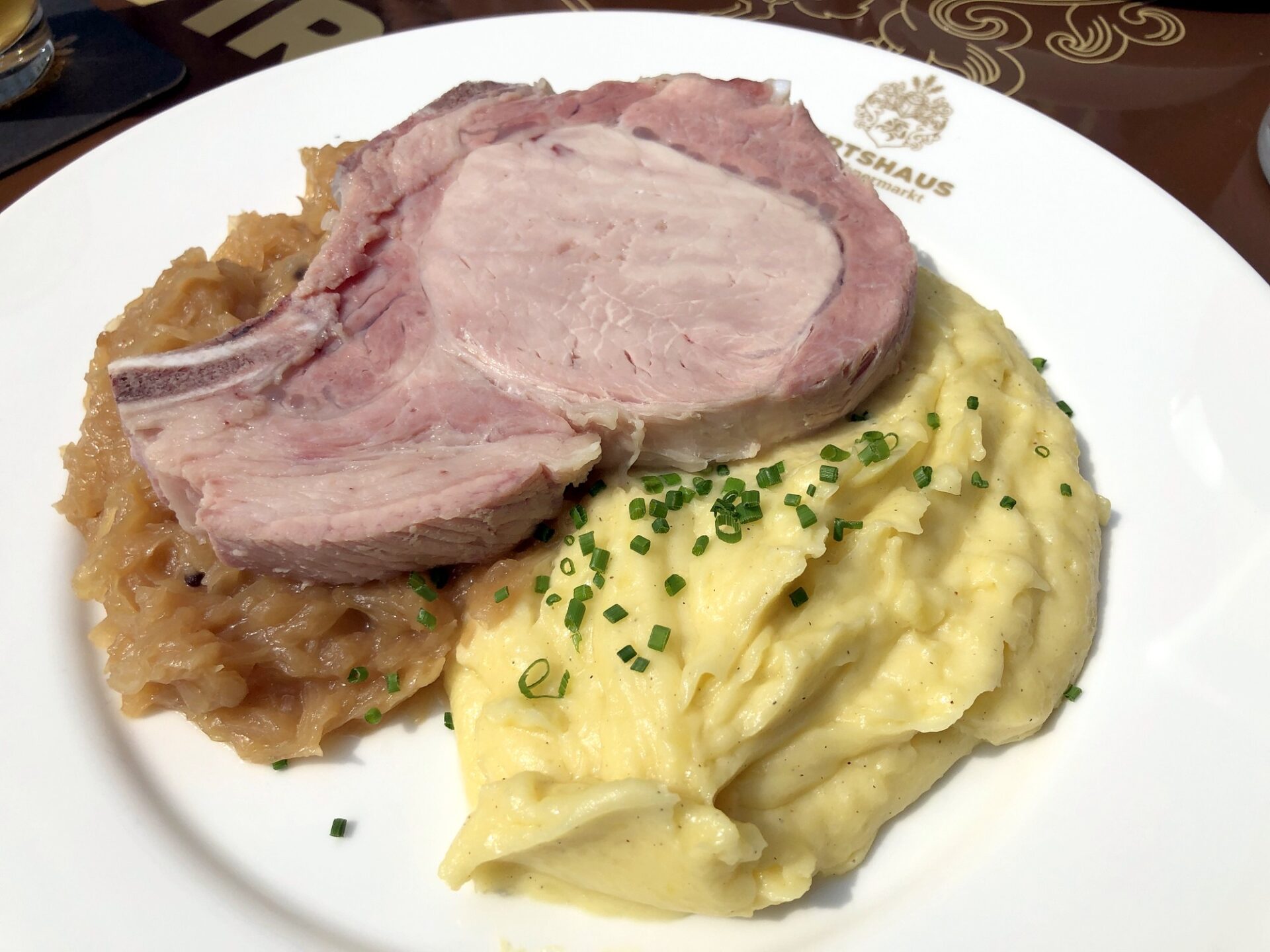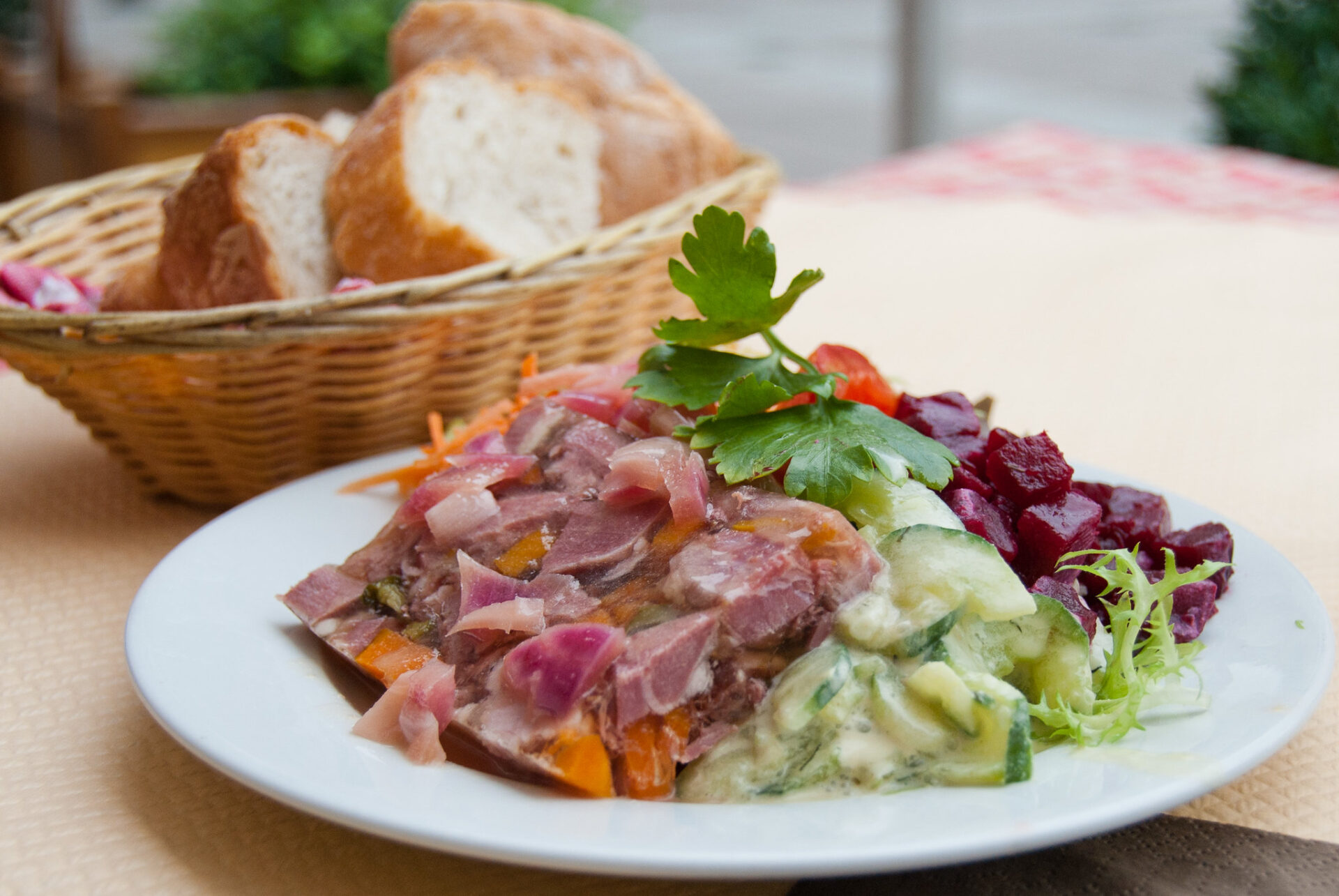Exploring Hesse, Germany through its regional cuisine really opened my eyes to a world of flavors I never expected. Wandering from cozy taverns to bustling food markets, I stumbled on some seriously traditional dishes that make this region stand out.
The food here? Hearty, rooted in tradition, and loaded with local ingredients. I found myself tasting everything from tart Apfelwein (apple cider) to herby Grüne Soße and even the funky Handkäse cheese.
Each dish has a story—sometimes it’s about the land, sometimes the people. If you’re ever unsure what to eat in Hesse, these specialties are a solid place to start.
So, let’s dive into my top 5 culinary delights from Hesse. I’ll share what makes each one special and toss in a few tips on where to try them.

Apfelwein: The Soul of Hesse’s Beverage Culture
Frankfurt and the surrounding Hesse region practically run on Apfelwein, also known as Äppelwoi. Locals sip this tart apple wine in cozy taverns, usually with hearty food, and always poured from those iconic jugs called Bembels.
Traditional Apfelwein Production
Don’t expect sweet apple cider here. Hesse’s Apfelwein makers blend tart, local apples and press them for juice.
They ferment the juice with yeast, either wild or added. Over several weeks, the sugars turn to alcohol, leaving behind a dry, crisp drink—usually about 5–7% ABV.
Most Apfelwein looks a little cloudy, tastes sharp, and never fizzes like sparkling cider. You’ll see it poured into ribbed glasses called Geripptes.
Producers around Frankfurt stick to traditional methods, relying on regional apples and recipes passed down over generations.

Where to Taste Apfelwein in Frankfurt and Beyond
When I wandered through Frankfurt’s Sachsenhausen district, Apfelwein was everywhere. Classic Apfelweinwirtschaften (apple wine taverns) serve it fresh from the barrel.
Some of my favorite spots are tucked into rustic buildings along Bergerstraße or in historic taverns like Zur Sonne, which has been around for over 500 years.
Inside, you’ll find wooden benches, buzzing conversation, and a sense of community that’s hard to fake.
Menus usually pair Apfelwein with hearty dishes—Handkäse mit Musik, Schnitzel, and the famous Grüne Soße. If you venture outside Frankfurt, you’ll discover village cider houses where family recipes and local apples make each glass a little different.

Bembel: The Iconic Apfelwein Jug
No Apfelwein experience feels complete without a Bembel. This gray stoneware jug, hand-painted in blue, comes in all sizes—some just for you, others big enough for the whole table.
Taverns serve Apfelwein in a Bembel and pour it into individual glasses. It’s not just a jug; it’s a symbol of Hessian hospitality.
Some places line their shelves with old Bembels collected over decades.
Honestly, sharing from a Bembel turns drinking Apfelwein into something special. It’s about the drink, sure, but also the atmosphere and the connections you make.

Frankfurter Grüne Soße: Hesse’s Famous Green Sauce
Frankfurter Grüne Soße is a real classic here. It’s all about fresh herbal flavors and a unique regional identity. This cold, vivid green sauce gets its character from a distinct mix of herbs and usually comes with eggs and potatoes. It’s even a protected regional specialty—locals are proud of this one.
The Seven Essential Herbs in Grüne Soße
At the heart of Frankfurter Grüne Soße are seven fresh herbs: borage, chervil, cress, parsley, chives, burnet, and sorrel. Each brings something different—borage tastes like cucumber, chervil is faintly aniseed, and burnet is surprisingly nutty.
Table: The Seven Grüne Soße Herbs and Tasting Notes
| Herb | Flavor Description |
|---|---|
| Borage | Fresh, cucumber-like |
| Chervil | Mild, slightly aniseed |
| Cress | Peppery, sharp |
| Parsley | Bright, grassy |
| Chives | Oniony, gentle |
| Burnet | Nutty, mild |
| Sorrel | Tart, lemony |
Chop the herbs super fine to release their oils and bring out that vivid color. The result is a sauce that’s both herbal and creamy, with a real zing.

Classic Grüne Soße with Hard-Boiled Eggs and Potatoes
The most traditional way to eat Grüne Soße? Cold, with hard-boiled eggs and boiled potatoes (“Frankfurter Grüne Soße mit Eiern und Kartoffeln”). The sauce mixes a dairy base—quark, sour cream, or yogurt—with sunflower oil, a splash of vinegar, and sometimes mustard.
After washing and chopping the herbs, you mix them into the creamy base. Occasionally, people stir in hard-boiled egg yolks for extra richness.
Potatoes stay simple—just boiled and peeled—so they can soak up all that green goodness. Egg halves cut the tang and bring everything together.
This plate feels filling but never heavy. It’s all about those herbs, especially when spring and early summer roll around.

Protected Geographical Indication and Regional Pride
The EU gave Frankfurter Grüne Soße Protected Geographical Indication (PGI) status. Only sauce made with fresh herbs grown around Frankfurt can carry the name.
Local producers bundle the seven herbs and label them for authenticity.
This isn’t just about a recipe—it’s about local pride and tradition. In Frankfurt, the sauce reflects Hessian cuisine and a connection to the land.
Small farms near the city supply the herbs, selling them at markets in iconic white paper wrappers. That PGI status keeps both the tradition and local farms going strong.
Whenever I taste Grüne Soße in Frankfurt, I get a sense of history and pride with every bite.

Handkäs mit Musik: The Unique Cheese Specialty
Handkäs mit Musik is a cheese dish you’ll either love or, well, learn to love. It’s got a sour tang, a strong aroma, and plays a starring role in Hessian food culture—especially when paired with Apfelwein.
Origins and History of Handkäs
Handkäs (sometimes spelled handkäse) hails from Hesse. The name means “hand cheese” because people used to shape it by hand into small, flat rounds.
It’s a sour milk cheese with a tangy flavor and a punchy scent. Farmers and workers once ate it as a staple—just sour milk and salt, nothing fancy.
During fermentation, the cheese develops its trademark taste and aroma. These days, you’ll find it in shops and restaurants all over Hesse.
Handkäs stands as a symbol of Hessian food culture and tradition.

Serving Handkäs mit Musik
“Handkäs mit Musik” literally means hand cheese with music. The “music” is a marinade of raw white onions, vinegar, oil, caraway seeds, and sometimes pepper.
To serve, I arrange the cheese rounds on a plate, spoon the onion marinade over them, and let it sit so the flavors meld.
Locals eat it with rye bread and butter. A typical move is to spread butter on the bread, top it with cheese and onions, and dive in.
The onions bring a bite—and, as the joke goes, the “music” comes later.

Pairing Handkäs with Regional Apfelwein
Hessians almost always pair Handkäs mit Musik with Apfelwein. The tangy cheese and the tart apple wine just work together.
The crisp apple notes in the wine balance the sharpness of the cheese and onions. Traditional pubs in Frankfurt and across Hesse serve them as a set.
When I tried this combo, the Apfelwein kept my palate fresh, making each bite of Handkäs feel new. It’s a pairing I’d go back for any day.
Quick serving tip:
- Serve Handkäs cold, with plenty of marinade
- Offer hearty bread and butter
- Pour a chilled glass of Apfelwein for the full Hessian experience

Iconic Regional Dishes and Other Local Delicacies
Hesse’s food scene goes beyond cheese and cider. The region serves up everything from sausages to sweet treats, each with a story.
Frankfurter Rippchen and Frankfurter Würstchen
Frankfurter Rippchen is a juicy, cured pork chop. Locals warm it gently in sauerkraut or broth, which keeps it tender and not too salty.
You’ll usually get it with mashed potatoes, mustard, and sauerkraut. Apple wine on the side? Absolutely.
Frankfurter Würstchen are thin, smoked pork sausages. They’re firmer than American hot dogs and pack more flavor.
Tradition says to heat them in hot (not boiling) water so they stay intact. I like them best with a fresh bread roll and a dab of mustard.
Both dishes celebrate simple, quality pork—something Hessian cuisine does really well.
| Dish | Description | Typical Sides |
|---|---|---|
| Frankfurter Rippchen | Cured pork chop, mildly salty, tender | Sauerkraut, potatoes |
| Frankfurter Würstchen | Smoked pork sausage, firm casing | Bread roll, mustard |

Frankfurter Rindswurst and Presskopf
If you’re not into pork, try Frankfurter Rindswurst. Created in the 19th century for Frankfurt’s Jewish community, it’s made almost entirely from beef.
It’s juicy, smoky, and best with rye bread and onions. You’ll spot it at sausage stands and in traditional taverns.
Presskopf is a bit more adventurous. It’s a type of head cheese—pork head meat set in gelatin, sliced cold.
The texture might surprise you, but the flavors are rich and spiced with vinegar, onions, and herbs. People often eat it with bread, pickles, and a glass of apple wine.
Both dishes show how Hessian cooking uses every part of the animal and isn’t afraid of bold flavors.

Bethmännchen and Frankfurter Kranz
When it comes to dessert, Bethmännchen are a local specialty I look forward to. These little marzipan cookies are topped with three almond halves and baked until golden.
They’re especially popular at Christmas, but you’ll find them in bakeries year-round.
Frankfurter Kranz is the region’s signature cake. It’s a layered buttercream cake, covered with crunchy caramelized nuts called “Krokant.”
The cake’s shape symbolizes a crown, a nod to Frankfurt’s royal history. Inside, you’ll find layers of sponge cake, jam, and rich buttercream.
Both desserts prove that Hessian sweets are all about simple elegance.

Exploring Hesse’s Wine Regions and Culinary Destinations
Hesse isn’t just about food—it’s a patchwork of famous wine regions, charming towns, and cities brimming with local flavors.
I’ve found unique traditions, family-run vineyards, and unforgettable recipes at every stop. There’s always something new to taste, and honestly, that’s what keeps me coming back.
Rheingau Wine and Spätlese Traditions
The Rheingau region really feels like the heart of Hesse’s wine culture. It hugs the Rhine River and, honestly, the Riesling here is legendary.
When I wandered along the Rheinsteig trail, I saw terraced vineyards that families have tended for ages. It’s wild to think some winemakers started perfecting their craft way back in medieval times.
They came up with Spätlese—which means “late harvest”—right here. Winemakers pick the grapes later in the season, so the wines turn out sweeter and more aromatic. That extra ripeness makes a difference you can taste.
Must-try experiences in Rheingau:
- Wine tastings at local wineries
- Touring Schloss Johannisberg, a historic vineyard
- Pairing Riesling with regional cheese
These traditions give Rheingau wine its own personality. The Rieslings usually come out crisp, fresh, and sometimes with just a hint of sweetness.

Odenwald and Fulda: Hidden Culinary Gems
Sure, Rheingau gets all the attention for wine, but I discovered that Odenwald and Fulda have their own food magic. Small family restaurants here still cook the old-fashioned way, sticking to recipes passed down through the generations.
The Odenwald is all forests and rolling hills. People here love Handkäse—a tangy, sour milk cheese with onions—plus apple desserts and wild game. Over in Fulda, the food pulls inspiration from Hesse and the neighbors. Think hearty breads, sausages, and seriously filling meals.
Food and local life go hand in hand. Restaurants often use ingredients from just down the road. At a cozy inn, I tried Grüne Soße—that creamy, herby green sauce—served over potatoes or eggs. It’s simple, but you can taste the history in every bite.

Wiesbaden, Kassel, and Frankfurt am Main: Essential Stops
City life in Wiesbaden, Kassel, and Frankfurt am Main mixes classic Hesse flavors with a modern twist. Every city brings something unique, yet you can spot little hints of international flair if you look closely.
In Wiesbaden, spa culture and wine go hand in hand. Local bars love to pour Rheingau wine—honestly, it’s the perfect way to wind down after a relaxing day.
Kassel leans into its fairy-tale roots. The Brothers Grimm lived nearby, so you’ll often find restaurants serving Grimm-inspired menus, packed with local veggies and fresh-baked treats.
Frankfurt am Main? It’s all about Apfelwein (apple wine). The taverns feel cozy and alive, with folks gathering over glasses of this crisp drink, plus bites of Handkäse or Frankfurter Rindswurst.
Food markets in Frankfurt buzz with fresh bread, cheeses, and those irresistible warm pretzels. You can almost taste the history in every bite.
Tradition and family recipes really do shape every meal here. After every visit, I felt a little more connected to Hesse’s roots—and honestly, a bit inspired by the way city life keeps evolving.

